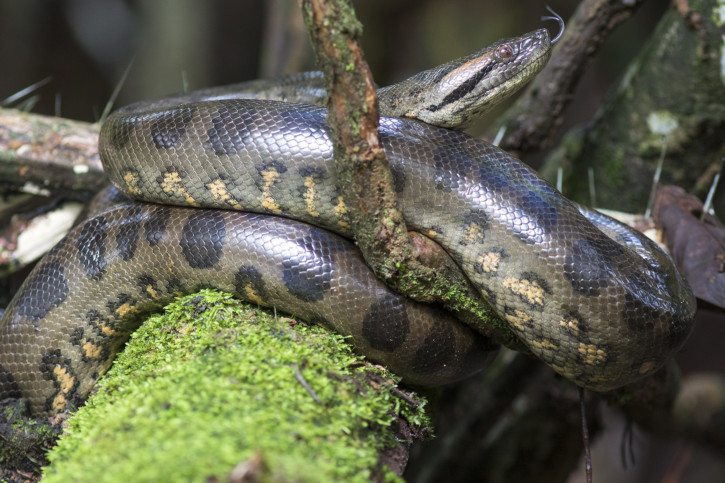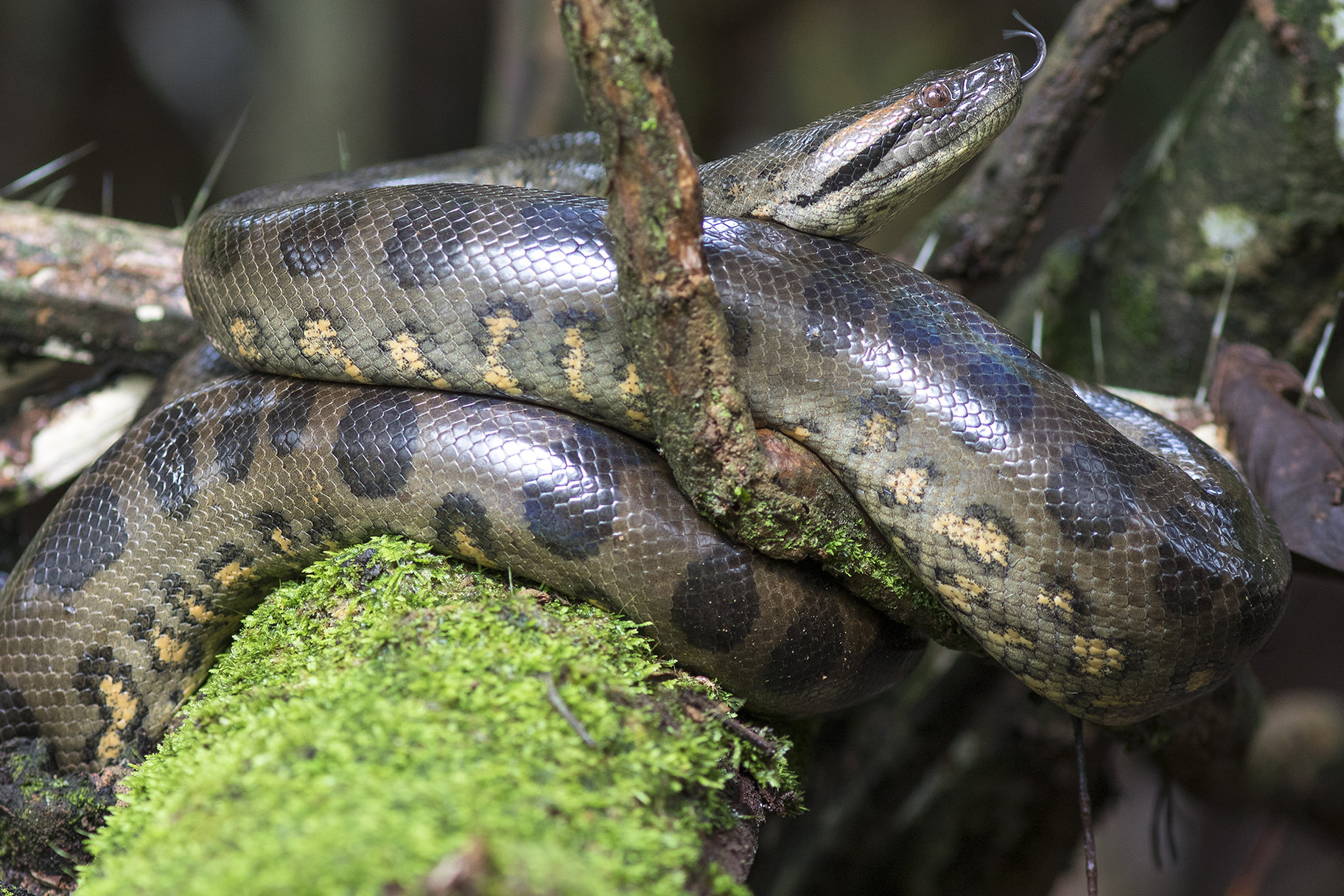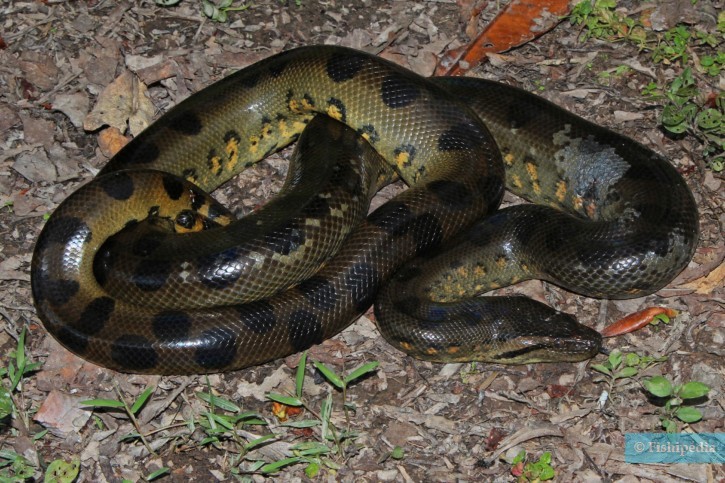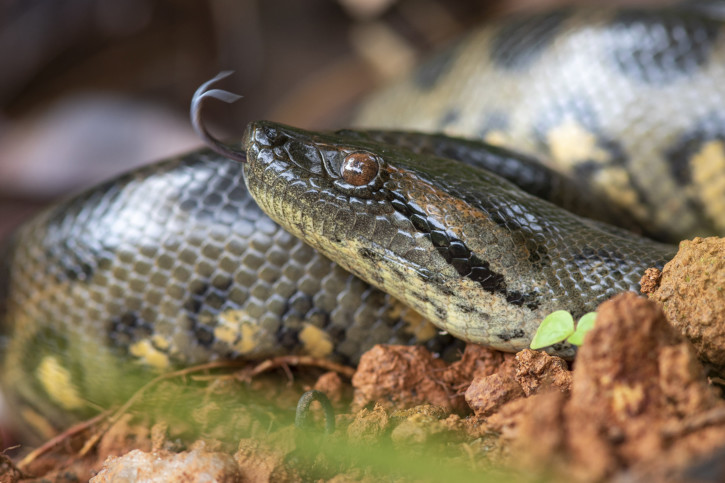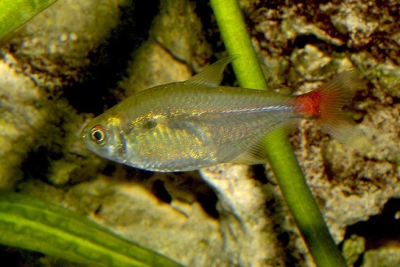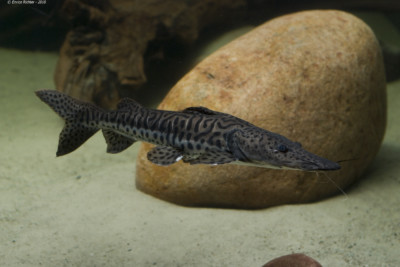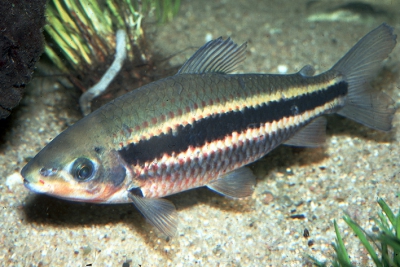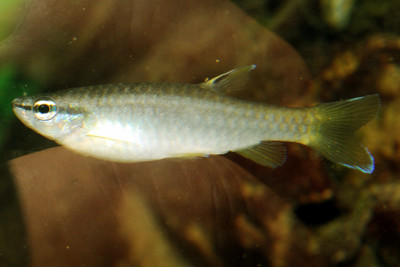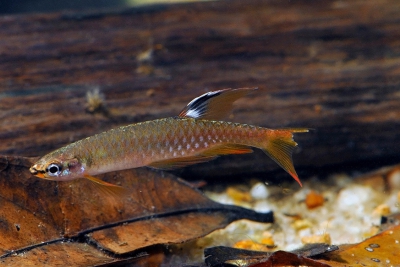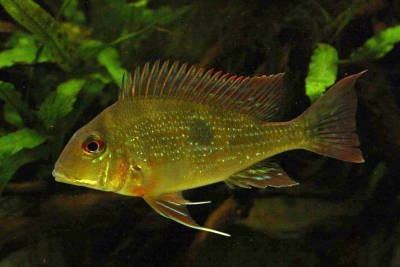Introduction
The green anaconda Eunectes murinus is commonly referred to as the green anaconda, common anaconda, or giant anaconda. A justified appellation as it is the longest snake in the world.
The most reliable record of size dates back to 1973. It was recorded by Minton and Pope in the Orinoco basin, in Colombia. Shot by a team of prospectors, the specimen measured 11.5 meters. This is longer than the largest reticulated pythons in Asia which can reach 10 meters. Nowadays, these old observations are often forgotten by herpetologists who attribute a size approaching 9 meters to the green anaconda.
An oversight that can be justified by the decrease in old specimens in their natural habitat. Victims of poaching, deforestation, and the drying up of wetlands, anaconda populations are declining. Despite being resilient and discreet despite their size, large specimens are experiencing a scarcity of prey. While the anaconda sparks many fantasies, there is still no evidence of attacks on humans to this day.
When it comes to weight, there is no debate. At 250 kilos, the green anaconda is indeed the heaviest snake in the world.
Who is it?
Morphology
-
Type
-
Female size700 - 1150 cm
-
Male size400 - 600 cm
-
Weight200 - 250 kg
-
Motifponctuations
-
Mimicryplants
-
Longevity30 year
-
Type
-
Female size700 - 1150 cm
-
Male size400 - 600 cm
-
Weight200 - 250 kg
-
Motifponctuations
-
Mimicryplants
-
Longevity30 year
How to recognize This reptile ?
The body is olive green in color that transitions to yellow towards the belly. The dorsal part is covered with numerous rounded brown and black spots. The eyes and nostrils are located on the top of the skull. A black band connects the eye to the lower jaw.
All these features provide it with ideal camouflage to surprise its prey, sometimes larger than itself. An achievement made possible thanks to its powerful jaw that can dislocate. For even more discretion, it prefers to hunt at night, rarely during the day.
Ratio Humain-Animal
Sexual dimorphism
Females are larger than males. They average between 7 and 9 meters, while males range between 4 and 6 meters.
Behaviour & Life cycle
-
Sociabilitysolitary
-
Way of livingnocturnal
-
VenomousNo
-
Dietpredator
This snake is a solitary predator that prefers a nocturnal lifestyle.
It adopts a stealthy hunting style that allows it to suffocate or drown its prey. It can detect approaching animals through vibrations or chemical signals in the air using its forked tongue and Jacobson's organ. While its preferred element is water, it can climb trees if necessary.
It feeds on a wide variety of animals: mammals (deer, tapirs, capybaras), birds, reptiles (turtles, caimans), and even fish. While some record catches have reached up to 45 kilos or more, this is not representative of the anaconda's usual prey.
Young anacondas are more aggressive as they are more frequently threatened. Probably a remnant from their birth: as soon as they are born, snakelets can only rely on themselves. The young are also frequently hunted by jaguars and caimans. Outside of the hunting season, the large female is more peaceful.
This snake can exhibit occasional cannibalism.
Reproduction
-
Reproductionovovivipare
-
PolygamyYes
-
Clutch size20 - 40 eggs
There is little information on the breeding season of this ovoviviparous reptile. The few records on this topic mention a period from December to March.
Larger than the male, the female is polyandrous. She can have up to a dozen partners at the same time. To mate, she emits pheromones to attract as many males as possible. They encircle her to fertilize her, which can last several days. The female sometimes eats certain males during reproduction. An act that is useful for her as she fasts during the seven months of incubation.
Contrary to many reptiles, the eggs are directly incubated in the female's body. On average, the clutch size ranges from 20 to 40 eggs. When the young are born, they are between 60 and 96 centimeters long, almost the size of European grass snakes.
Risks for humans
-
VenomousNo
-
BiteYes
In nature, the green anaconda is not aggressive towards humans if observed from a distance without disturbance. If disturbed and handled, the green anaconda will vigorously defend itself, bite, and regurgitate the contents of its digestive tract.
The bite of the green anaconda is not venomous as it does not possess venom. However, given the size of the subject, it can be compared to a cat scratch or a Rottweiler bite. This aquatic species also contains a large amount of bacteria in its mouth, which can easily infect the wound. Its teeth are very fine and can break during a bite, remaining in the wound. The larger the specimen, the longer the teeth, which can cause serious and deep wounds.
Sensational stories of anacondas attacking humans have appeared in popular literature for centuries. However, rare cases of anaconda attacks on humans have been reported in scientific literature. In 1997 (J. C. Murphy), a young girl was reportedly grabbed by an anaconda by her swimsuit and then rescued by her sisters. In 1998 (J. A. Rivas), two herpetologists on a scientific mission in the swamps allegedly experienced predation attempts by two anacondas measuring 5m and 4.45m. The first anaconda emerged from the water, catching the herpetologist at the knee, tearing his pants, then again at the waist, unsuccessfully, as she managed to avoid the bite. The second anaconda reportedly rose 25 cm above the water to attack another herpetologist, also without success as he was able to avoid the bite.
Theoretically, a 6m anaconda could easily swallow a child or a small adult, and an 8m specimen could swallow an adult of any size. However, to be caught, the person would have to be extremely careless, asleep, or intoxicated to not be able to avoid the attack.
Origin and distribution
Geographic distribution & Conservation
It is found in swamps, rivers, and flooded grasslands of South America, with the exception of Chile.
The green anaconda is listed in Appendix II of CITES (Convention on International Trade in Endangered Species of Wild Fauna and Flora), which means that while it is not necessarily currently threatened with extinction, it could become so if the trade of their specimens was not closely monitored.
Populations of this species have been greatly reduced mainly due to habitat destruction and hunting.
Conservation status of populations (IUCN)
What is its habitat?
Natural environment characteristics
-
Temperature15 - 28 °C
-
FlowSlow
Biotope presentation
A semi-aquatic snake, the green anaconda is never found far from a water source. It thrives in streams, rivers, swamps, and lakes with abundant vegetation and flooded meadows. It prefers slow and murky waters.
Species of the same biotope
To go further
Sources & Contributions
Participation & Validation
The Fishipedia team and specialist contributors are committed to providing high-quality content. However, although the information comes from scientific sources or testimonials from specialists, the cards may contain inaccuracies.

Silvia Gomez

Benoit Chartrer

Nans Gourgousse
Translation
Translation done with the valuable contribution of our translators, who make this information available to a wider audience. We sincerely thank them for their commitment.
Bibliographic references
- - GBIF
- - Observations on the Natural History of the Green Anaconda (Eunectes murinus, Linnaeus, 1758) in the Venezuelan Llanos: An Ecotourism Perspective - César L. Barrio Amorós - Róger Manrique - ICRF Journal, Reptiles and Amphibians - 2008. Volume 15, numéro 1 (Previous name of the journal was "Iguana: Conservation, Natural History, and Husbandry of Reptiles")
- - Predatory attacks of green anacondas (Eunectes murinus) on adult human beings - Jesús Antonio Rivas - Herpetological Natural History - 1998. Volume 6
Scientific partners
Species of the same biotope
